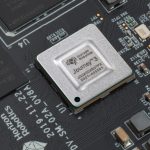
Medical treatments generate a huge amount of data, but so far the healthcare sector has been slow to adopt AI for processing it. That’s all set to change. According to Frost & Sullivan, the AI market in healthcare could grow at a compound annual growth rate of 40 percent by 2021, potentially halving the cost of treatment.
AI can help healthcare professionals in several ways. It can help to assess the diagnosis and prognosis for disease, reducing human error rates and workload. It can also analyse complex data to provide new insights, potentially identifying previously unseen correlations that can lead to new treatments.
Of course, patients benefit too: because clinicians can do their job more effectively, patients can receive more timely and effective care, leading to improved outcomes.
Analysing diverse data formats
Healthcare data is stored in multiple formats, including numerical, text, images, scans, and audio & video. There are many research studies, demonstrating success in applying AI to these different data types.
For example, deep learning models can be used to analyse MRI scans and measure tumour growth in cancer patients. Using a convolutional neural network (CNN), false positives can be reduced, cutting the number of invasive biopsies carried out on patients. A team in China achieved 93 percent accuracy in distinguishing malignant from benign cancer by analysing elastograms, images that show the elasticity and stiffness of soft tissue.
Text-based data can also be processed using AI. Using a neural network to extract risk factors from 21 million electronic health records, 8500 patients were identified who were at risk of developing heart failure, with 85 percent accuracy. A similar technique was used to identify psychosis in patients with schizophrenia based on their speech patterns, with 100 percent accuracy.
In another study, a team in Canada used raw electrocardiogram (ECG) data to build a deep convolutional neural network (DCNN) model. It learned the key features of a life-threatening heart disease (paroxysmal atrial fibrillation) and was able to help with patient screening.
There are many more examples of how AI has been applied to healthcare data in the article Artificial Intelligence and Healthcare Data.
Overcoming the barriers
There are several barriers to overcome:
- The healthcare sector is only now becoming aware of how AI can help
- It can be difficult to get access to data for training models, because of the sensitivity of medical data
- It can be difficult to validate the AI models
In order to overcome these barriers, there needs to be closer cooperation between the healthcare sector and data scientists. According to a team from Harvard Medical School, pathologists had a 3.5 percent error rate in breast cancer diagnoses. An AI model cut the error rate to 2.9 percent. When pathologists were paired with AI, the error rate was further reduced to 0.5 percent.
Build your AI skills
To find out more about the algorithms, frameworks and tools you can use to develop AI models, join the Intel® AI Academy. Membership is free and provides access to the Intel® AI DevCloud compute space for building and optimising your solutions. Using on-demand courses, you can study machine learning, deep learning and hands-on AI.






